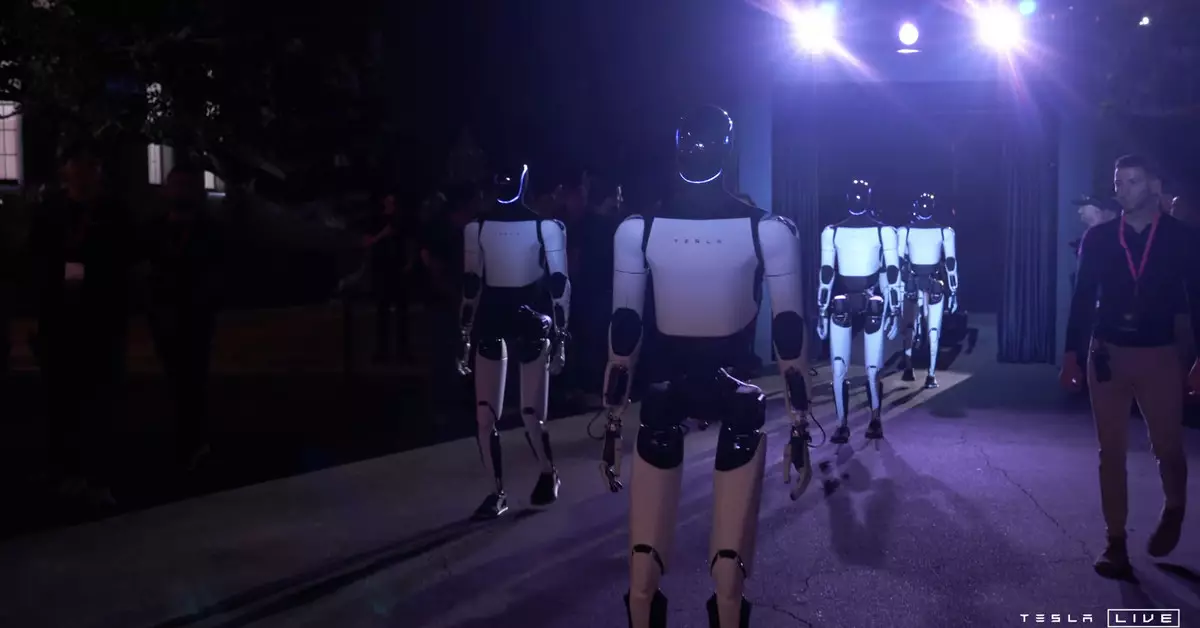Tesla, a brand synonymous with innovation, has recently showcased the latest advancements in their robotics initiative during their much-anticipated Cybercab event. CEO Elon Musk’s vision of the Optimus humanoid robot is ambitious and multifaceted. Designed to seamlessly blend into everyday life, the Optimus is pitched not only as a sophisticated piece of technology but as a companion that can take on a spectrum of human-like responsibilities. From mundane tasks such as plant watering to more complex duties like dog walking and childcare, the breadth of the Optimus’ purported capabilities suggests a future where humans and robots coexist more closely than ever.
One of the most striking aspects of Musk’s presentation was the projected price tag of the Optimus, estimated to be between $20,000 and $30,000. This pricing strategy indicates an intent to make advanced robotics accessible to the average consumer, a departure from many high-end tech products that often cater to a niche market. Musk confidently claimed that the Optimus will represent “the biggest product ever of any kind.” Such a statement invites scrutiny, as it raises questions about the market demand for robots capable of performing household chores and the practical implications of integrating such technology into daily life.
Despite the excitement surrounding the Optimus, the live demonstrations at the event revealed limitations in the robot’s capabilities. While there were instances of interaction — such as handing out gift bags or participating in a game of rock-paper-scissors — the robots mostly displayed rudimentary behaviors like waving. Such performances challenge the perception of the Optimus as a fully autonomous assistant and reveal the developmental gap between Musk’s lofty promises and the current state of robotic technology. Critics may argue that these demonstrations emphasized form over function, showcasing the robots more as clever marketing tools rather than fully realized, functional companions.
The journey to the current iteration of the Optimus has been anything but linear. Initially announced in 2021, the project started on a whimsical note, featuring an entertainer in a robot costume that engaged in a comical dance. Fast forward to 2022, and we saw a more refined prototype take its first tentative steps onto the stage. This evolution highlights both the challenges and advancements Tesla has faced in bringing this concept to life. Musk’s goal of making the Optimus capable of “useful tasks” by the end of the year reflects a necessary pivot towards practical applications in order to gain consumer confidence.
As we reflect on Tesla’s latest undertaking, it becomes paramount to remain cautiously optimistic. While the vision articulated by Musk is undeniably inspiring, the real-world application of such technology remains a significant hurdle. The interplay between human expectations and technological capabilities will dictate the success of the Optimus and its eventual role in our lives. For now, the potential for an Optimus robot that can serve drinks or assist with household tasks is captivating, yet we must also consider the realistic timeline for such advancements. The dream may be alive, but translating it to functional reality will be the true test for Tesla’s ambitious robotics initiative.


Leave a Reply